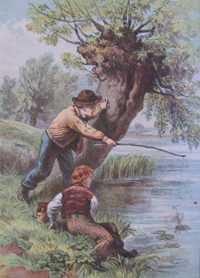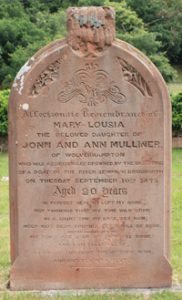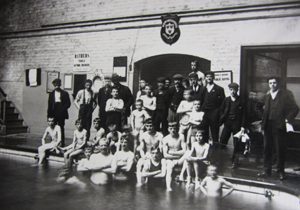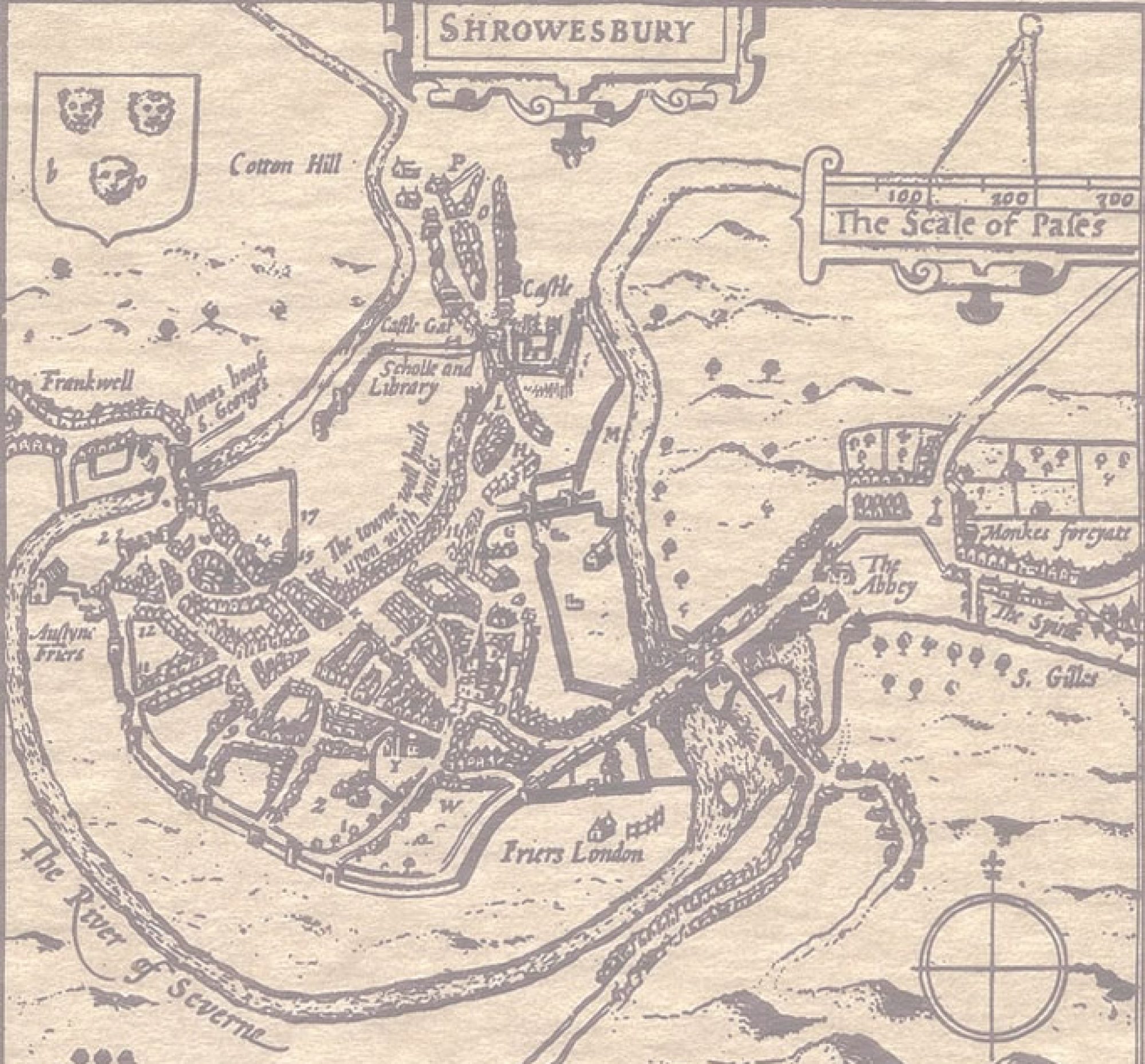
Recent calls for improved river safety echo one of the recurring themes of Henry Pidgeon’s Diary (written in the 1820s). In those days children regularly drowned when they swam in the river or played near it. For example, Pidgeon wrote on Friday May 28th 1824:
‘Master George Case (son of Rev G Case, Unitarian minister) whilst amusing himself and his dog on the banks of the river near the English Bridge, unfortunately slipped in and was drowned.’
And on June 1st – ‘a child aged 5 years drowned at Coton Hill, the name was Barton’
And on Thursday July 1st –‘two youths…were drowned in the river beyond Dr Darwin’s, the water being at the time bank full…’[see footnote 1]
Those who helped could also get into difficulties. On Monday November 15th 1824 Pidgeon wrote ‘Yesterday a little girl by the name of Harwood fell into the river from the footpath near Water Lane, Frankwell. A young man named John Mansell observed the accident and being a good swimmer, plunged in with his clothes on and succeeded in pushing the child so near to the shore that with the assistance of two bystanders she was taken out. Mansell, however, was unfortunately in the deeper part of the stream, which was bank full, and the wind blowing rather strong; his long coat by some means got over his head, and he became overwhelmed in the merciless element… He has left a widow, who was only confined the day previous, and two helpless children to mourn his untimely end.’
This tragedy became well known, and so on November 20th 1824 Pidgeon noted that ‘A subscription has been commenced this week for the support of the widow and children of Mansell. From the interest excited, and support given, [the subscription] promises to be a liberal one.’ This proved to be the case, for Pidgeon recorded that just after Christmas some of Mansell’s friends arranged an entertainment at the theatre, which raised £82 9s 0d (about four year’s wages for a labourer).[see footnote 2]

Pidgeon mostly reported accidents involving children, but adults also regularly drowned. At that time the river was used much more than now both for navigation and leisure, and few people could swim. The illustration shows a gravestone in Bridgnorth, recording the death of Mary Mulliner in 1872 aged 20, drowned ‘by the upsetting of a boat’. The shock and suddenness of the accident is encapsulated in the inscription – ‘In perfect health I left my home, Not thinking that my race was run…’
Then, as now, a common cause of drowning was alcohol intoxication. For example Pidgeon recorded on Friday July 23rd 1824 that ‘An old pensioner generally known by the name of ‘Frank’, being in a state of intoxication, slipped into the Severn near Dr Darwin’s and was drowned.’ Pidgeon, however, does not record what is now the most common cause of drowning – suicide. Perhaps the lack of records reflects that suicide was then a criminal offence, so it is likely that many successful suicides were recorded as accidental deaths.
So what was to be done to prevent drowning and help those in trouble? Henry Pidgeon actively supported the re-formation of a branch of the Humane Society, which was originally founded in 1791, but had lapsed. [see footnote 3] The Humane Society taught a primitive form of life saving, supplied buoyancy aids, and gave rewards to those who had performed a rescue. Pidgeon wrote on Wednesday Dec 29th 1824 that ‘A numerous attendance took place in the Guild Hall, when it was resolved that a Humane Society was seriously wanted in this town, and that a committee be appointed to consider the best plan for establishing such a society and to submit it at a future meeting.’
As a result, the Shrewsbury branch of the Society was re-formed in 1825, but lapsed again after 20 years. [see footnote 4]

Drowning is less common now than in Pidgeon’s day, especially amongst children. What has probably made the most difference to these statistics is the swimming pool (opened in 1894). [see footnote 5] There has also been much work done to make the river banks more secure, we now have many more bridges for safe crossing, and there are also proper health and safety measures for leisure users. Alcohol related accidents and suicides are, unfortunately, harder nuts to crack.
Footnotes
[1] Shropshire Archives, SA 6001/3055
[2] http://www.measuringworth.com/ppoweruk/ puts the value at about £66,000
[3] Pattison A, The Darwins of Shrewsbury, History Press, 2009, pp. 23-25
[5] Carr A, Shrewsbury, a Pictorial History, Phillimore, 1994, plate 52
